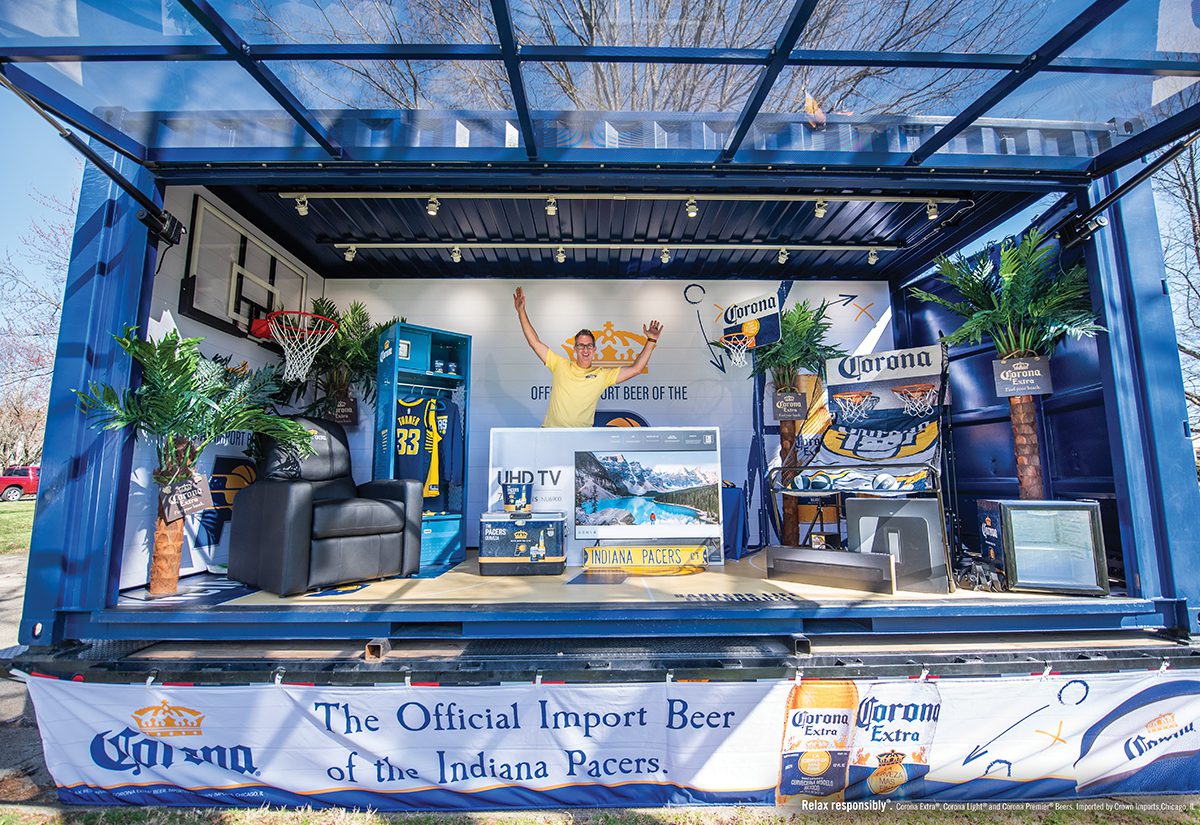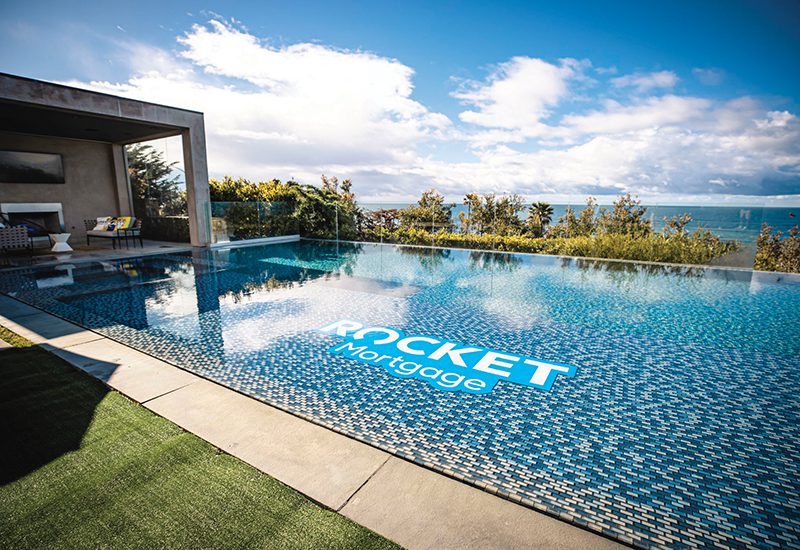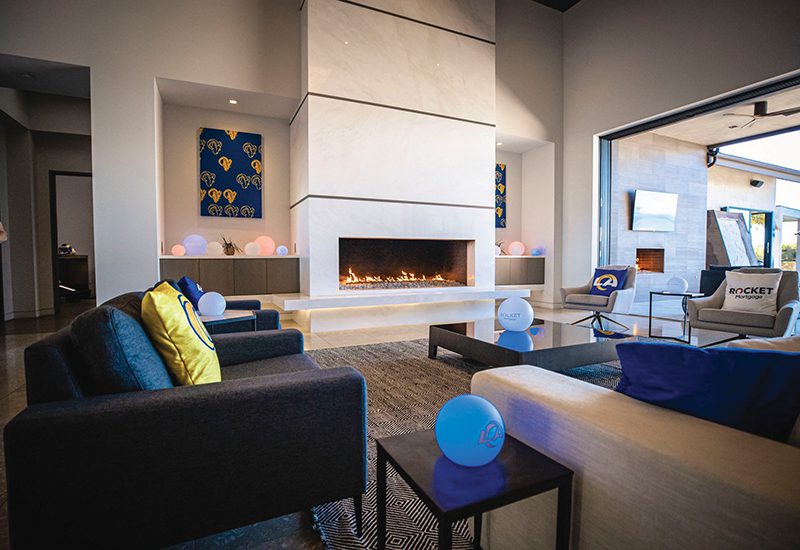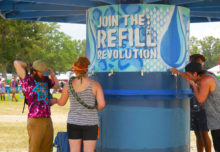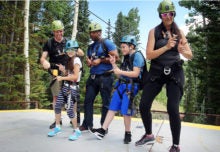
Corona took a direct approach to its 2021 Indiana Pacers sponsorship with elaborate mobile locker room fan activations.
Throughout all of the goals, touchdowns, runs and points scored, and all of the tackles, blocks, catches and assists made, one very important thing has been missing from professional sports for the better part of the last 16 months: fans.
For sports sponsors, the shuttered stadiums and limited game-day opportunities triggered by the pandemic required new methods of engaging fans (and partners) without the benefit of connecting in a physical setting. Ultimately, those brands leaned into robust social and digital content strategies aimed at bringing the gameday experience to consumers at home.
Now, as vaccines continue to roll out and stadiums, arenas and ballparks gradually return to full capacity, brands are looking ahead to what sports sponsorships will look like in a post-pandemic world. Whether they have implemented more traditional activation strategies or brand-new engagement tactics, the companies that have tested the waters in 2021 are leading the way to a renewed sports sponsorship landscape.
Take Mastercard, which recently inked a deal with the National Women’s Soccer League as an official top-tier partner in an effort to build equity and excitement around women’s sports while tapping into a consumer passion point. The sponsorship includes in-person activations like the VIP Game Day Experience, which gives fans the chance to watch their favorite NWSL team at a regular-season match from the best seats in the house and includes a prepaid Mastercard for food, beverages and swag. There are also virtual experiences on its Priceless.com platform for fans who can’t attend matches. Balancing in-person and digital fan engagement is a new approach for the brand.
“Going forward, with the advancements of technology and our own technological skills, I see experiences and fan engagement being something that maintains a dual approach—enabling that more intimate one-to-one or one-to-few experience, while also creating space and opportunity for people to participate remotely so we’re not bound by geographical and physical boundaries,” says Raja Rajamannar, cmo at Mastercard.
To find out how others are approaching their sports sponsorships in the months ahead, we tapped a few brand experts for their insights and predictions. Let’s play ball.
 More Sports Sponsorship Tactics:
More Sports Sponsorship Tactics:
- Corona’s Mobile Locker Room Experience Engages Pacers Fans in Their Backyards
- ‘Fresh and Different’: Mastercard Ambassadors Host Digital Priceless Experiences
1. Special access will be one of the keys to engaging fans at home.
Like Mastercard, many brands are moving into the new era of sports sponsorship with two audiences in mind: the one they’ll activate in-stadium and the one tuning in from home. Considering consumers’ varying levels of comfort with attending games in person, it’s more important than ever to balance engagement between the two crowds. One way to show at-home fans some love? Deliver access, whether it’s behind-the-scenes footage or virtual player meet-and-greets.
“We’ve learned a lot of great lessons in 2020 about how to engage with fans differently for digital and social, a lot of different ways to deliver a message and engage with consumers,” says Rene Ramos, vp-lifestyle and experiential at Constellation Brands. “So we want to find ways to integrate those so that even if you’re a fan sitting on the couch because you didn’t go to the game that night, we can still give you that kind of access to make you feel like you got the game experience. The challenge for us going forward is just keeping that in mind.”
Even properties are employing the tactic. “For the fans watching at home, it’s providing that inside look behind the scenes,” says Lexi Vonderlieth, vp-partnership marketing for the Los Angeles Rams. “We did a lot of it this year and you could see that those were the moments that fans loved. It was seeing personalities or getting that look that they hadn’t gotten before. We definitely still feel like we’ll be providing both of those things.”
2. Sponsors will get more selective about choosing partners that drive their business forward.
You can slap a logo on anything, but brands are increasingly seeking more intentional sports sponsorship opportunities that provide real value for their organizations, particularly at a time when bottom lines have been impacted by the pandemic. For Corona, it’s critical that the properties it partners with help drive its business objectives forward in a meaningful way.
“The biggest piece to the success that we’ve had is that with all the partners we line up with, we are very up-front about what we’re trying to accomplish, both from a marketing perspective and a sales perspective,” says Ramos. “We tie those two things together, we talk about how they can help us do that, and if they present a compelling framework for us to deliver that with the tools and assets that we need, then we’re usually on board with them. But we don’t do everything; we have to be choiceful.”
Properties like the Rams agree that sponsorships should move the needle for brands. Vonderlieth says the team works with sponsors to help them deliver on their goals, which she finds particularly important in this new era.
“We’re trying to pitch partners on bigger ideas that may not be in their contract, trying to upsell them on things we feel will help their business and create a better ROI for them, create impact, or create actual conversion on consumers in a better way,” Vonderlieth says.
3. Technology will play a larger role in on-site activations.
Whether it’s keeping fans safe through touchless solutions or getting their hearts thumping through virtual reality, “there is a tsunami of tech and data coming at us,” says Rajamannar, and that technology will play an even bigger role in on-site fan activations than it did pre-pandemic.
As the official wine brand of the PGA, Meomi would like to give fans “behind the rope” access that allows them to watch top golfers swing up-close. Since that would interfere with gameplay, the brand is instead considering offering a virtual reality experience within its on-site wine lounge that delivers that unique perspective. “It’s delivering on-site and enhancing that experience of yes, you’re here, but you can take it a step further through this technology,” says Ramos. “As fans come back, we want to overdeliver on that experience.”
For Rocket Mortgage, another PGA sponsor, AR, AI and touchless tech will all be leveraged to enhance the fan experience at tournaments—and beyond. “I love it because then you can utilize it not only at a PGA tour event, but you can take it to college football or basketball, or a business conference,” says Casey Hurbis, cmo at Rocket Mortgage. “You utilize the technology and skin it, and contextually relate it to the space that you’re at.”
4. Engagement will be delivered across multiple touchpoints that extend beyond sports.
Connecting with fans through passion points that extend beyond sports will likely be a popular tactic for sponsors as they look to create more dynamic experiences by engaging fans across multiple touchpoints.
“We have a history of focusing our efforts on creating unique, priceless experiences and connecting fans with their passions,” Rajamannar says. “And to celebrate the new [NWSL] partnership, we are doing exactly that through multiple touchpoints, like integrating Mastercard programs like our Girls4Tech [STEM-based mentorship program] into the partnership.”
Ramos says Constellation Brands is also incorporating touchpoints that reach beyond the sport itself. “There’s going to be an electricity in the air at every major sporting event for the foreseeable future. How do we make sure that our brands are part of that electricity and help even amp it up further, whether that’s through bringing in music or collaborations with fashion partners or sneaker partners. It’s bringing all the elements that make being a fan of a particular team so great all together for that fan. It’s almost like you want to overstimulate them with a variety of different engagements and touchpoints that you can tap into. Those types of things are going to be a lot of what you’re going to see as brands come back into the play here in ’21 and beyond.”
5. Fresh fan engagement strategies will set sponsors apart from the competition.
It’s tempting to rely on established activation strategies, but the pandemic has given sponsors time to take a step back and rethink what fan experiences, and the way they engage with teams and leagues, could look like in the new era. And as Vonderlieth puts it, the most successful sponsors won’t just “rinse and repeat.”
Consider Rocket Mortgage, which partnered with the Rams over the spring to deliver the Rocket Mortgage Draft House, a 9,000-square-foot home in Malibu where the team hosted its NFL draft, held business meetings and engaged sweepstakes winners through an amenity-rich weekend stay at the mansion (Southport Marketing handled). The concept was the first of its kind for the NFL and the brand.
“When partners like Rocket Mortgage want something that’s never been done, and you can spend a lot more time developing that idea based off of what their goals are, I definitely see more of that coming,” says Vonderlieth. “With all the negative things that COVID brought, you start to see some of the positives of working with change and having to get really creative.”
In other words, it’s a whole new ballgame.
This story appeared in the June 2021 issue

